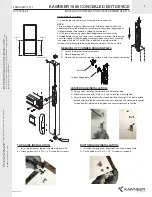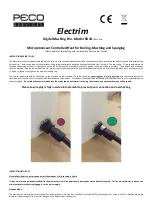
ioLogik 2500 Series Wireless LAN Network Setup and Configuration (for wireless LAN models)
7-7
PEAP
There are a few differences in the TTLS and PEAP inner authentication procedures. TTLS uses the encrypted
channel to exchange attribute-value pairs (AVPs), while PEAP uses the encrypted channel to start a second
EAP exchange inside of the tunnel. The ioLogik 2500-WL1 provides MS-CHAP-V2 merely as an EAP method
for inner authentication.
Inner EAP protocol
Setting
Description
Factory Default
MS-CHAP-V2
Microsoft CHAP version 2 is used
MS-CHAP-V2
Anonymous
Setting
Description
Factory Default
Max. of 31 characters A distinct name used for outer authentication
None
User name & Password
Setting
Description
Factory Default
User name and password used in inner authentication
None
Advanced
Additional wireless-related parameters are presented in this section to help you set up your wireless
network in detail.
Advanced Settings
Transmission Rate
Setting
Description
Factory Default
Auto
The device senses and adjusts the data rate automatically
Auto
Transmission Power
Setting
Description
Factory Default
3 dBm to
20 dBm
The device adjusts the transmission power
10 dBm
Fragmentation threshold
Setting
Description
Factory Default
256 to 2346
Specifies the maximum size of a data packet before splitting
and creating another new packet
2346
RTSreshold
Setting
Description
Factory Default
256 to 2346
Determines how large a packet can be before the Access
Point coordinates transmission and reception to ensure
efficient communication
2346
WMM
Setting
Description
Factory Default
Enable/
Disable
WMM is a QoS standard for WLAN traffic. Voice and video
data will be given priority bandwidth when enabled with WMM
supported wireless clients.
Enable
Turbo Roaming
Setting
Description
Factory Default
Enable/ Disable
Moxa’s Turbo Roaming can enable rapid handover when the
device, as a client, roams among a group of APs.
Disable











































